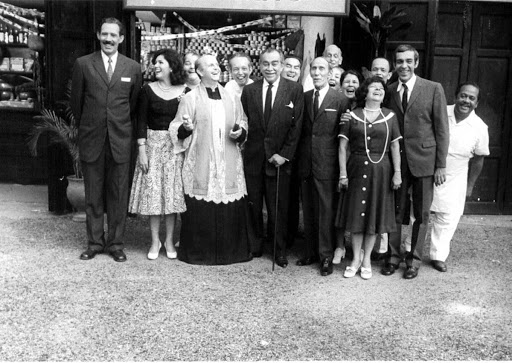Xavier Carbonell, SIGNIS Correspondent
If Memorias del subdesarrollo offered us the conflict of a unique character, Los sobreviventes (in English, The survivors, 1978) —also directed by Tomás Gutiérrez Alea— represents the collective dimension of the same problem: the Cuban bourgeoisie, symbolically and effectively trapped in the past, must witness the inevitable end of an era.
It was, indeed, one of the favorite topics of Titón, but recreated twenty years after the beginning of the revolution and with a new sense. The members of the Orozco family, facing the 1959 revolutionary avalanche, decide to lock themselves down in their manor, waiting for the conclusion of the deluge. They are convinced that everything will pass and, very soon, the state of things will go back to the old times.
But the country keeps changing and the reality, inside and outside the house, becomes asphyxiating and explosive.
As in Memorias…, the film reviews the events that shocked the first three years of the revolution: invasions, nationalizations, blockades, USA maneuvers and counterattacks. They were signs of a new order and the impossibility of returning to the past.
The Orozco family sees the fall of all their possibilities and privileges. And even when they try to seek asylum in old ceremonies and in their family archive, the decadence is imminent and brutal. Their immobility becomes recoil, to finally lose —by death or escape— all their members and servants.
The film’s premiere occurred in 1979, two decades after the date in which the story took place, and in a highly meaningful context. And this, of course, enriches the possible interpretations of the film.
We were living, since 1971, the so-called Grey Quinquennium of the Cuban culture —that others denominate Black Decade—: a period of censorship, bureaucracy and depression in art and literature. In addition, that year the Latin American Left tendencies broke their incipient unity, which held Havana as their axis. With the detention of the poet Heberto Padilla by agents of State Security (a sort of tropical KGB), many writers and artists —Mario Vargas Llosa, Carlos Fuentes, Jean Paul Sartre, among many others— signed a letter of protest and renounced definitely to the Cuban adventure.
Inside the country, in a spirit of besieged square, many bureaucrats had their chance to set a regime of radicalism and ignorance. Trough a merciless campaign, they swept away anyone who dared to dissent.
Los sobrevivientes, with humor and a peculiar narrative, tries to reconstruct this betrayal to the utopia. The metaphor of the family’s lockdown abandons its literal sense to become the symbol of a fraud.
“They’ll never know how close we were”, says a drunken Julio, the bitterest and most lucid among the Orozco. “We all were happy for a moment, as far as the eyes can see”. Now, in the realm of paranoia and backwardness, we could hardly see, breathe and create.
Cuba was transfiguring, in a painful process, into the old and aberrant house of the Orozco.
What was to come was only a continuity of the salación —that’s the name Cubans give to their historical fatalism—, but we were far from surrender. Also in the seventies our cinema gave birth to excellent films that, like the movies of Titón, made us immune to pessimism. We survived with the same formula we use today: wit and good humor.
***
The collection of articles “Cuba in Seven Films”, published by SIGNIS originally in Spanish, in 2020, received the Paco Rabal Award of Cultural Journalism, Madrid (Spain) in the category of “Young Promise”.


